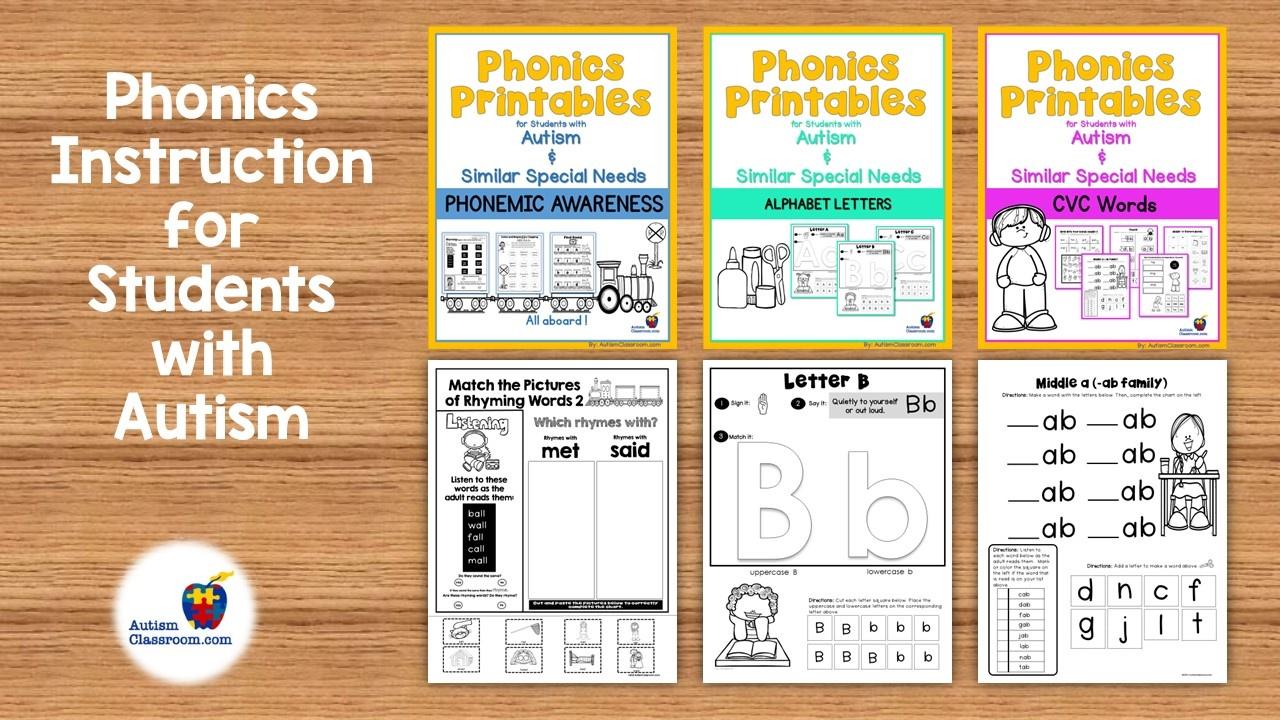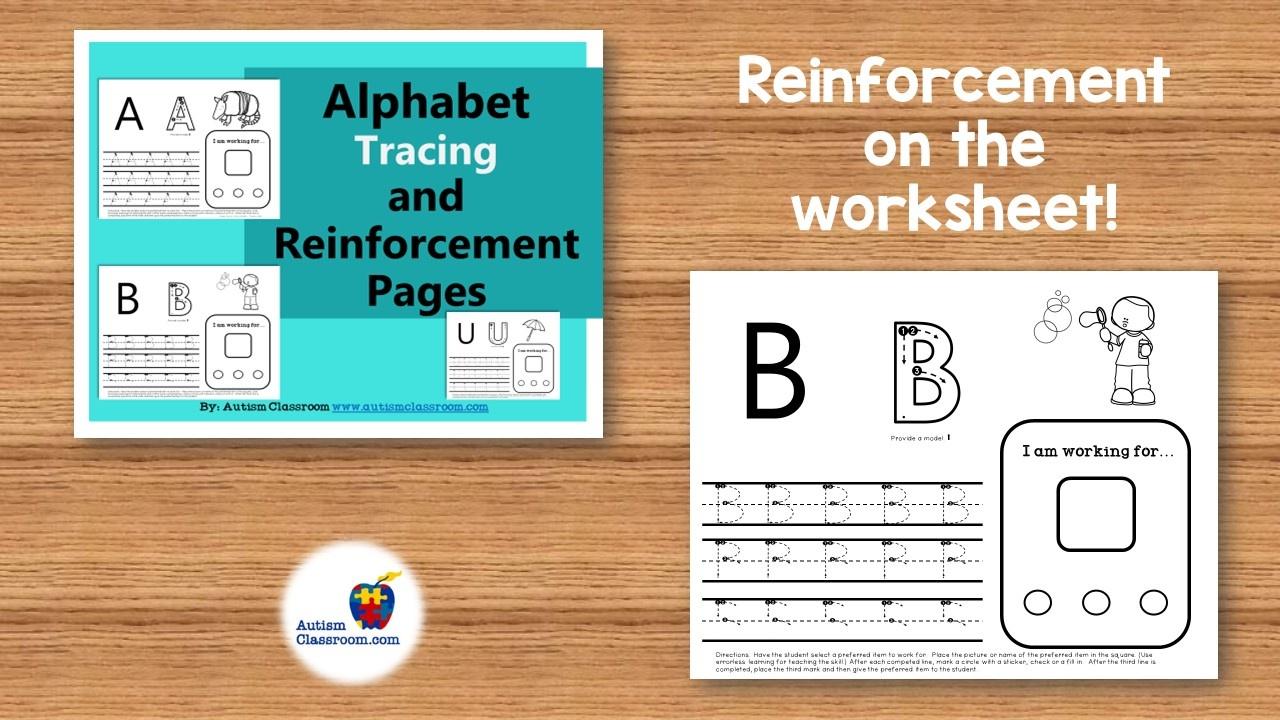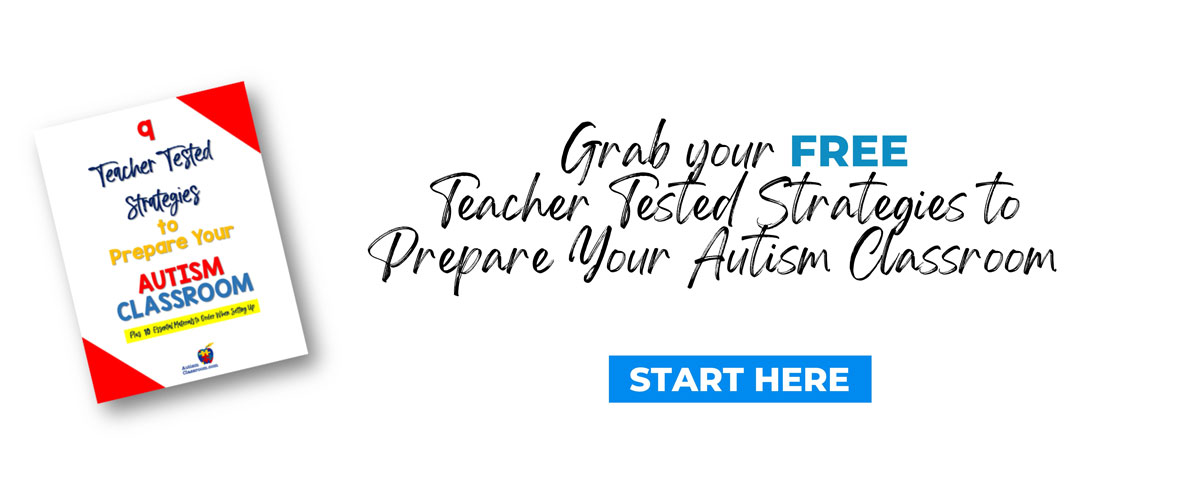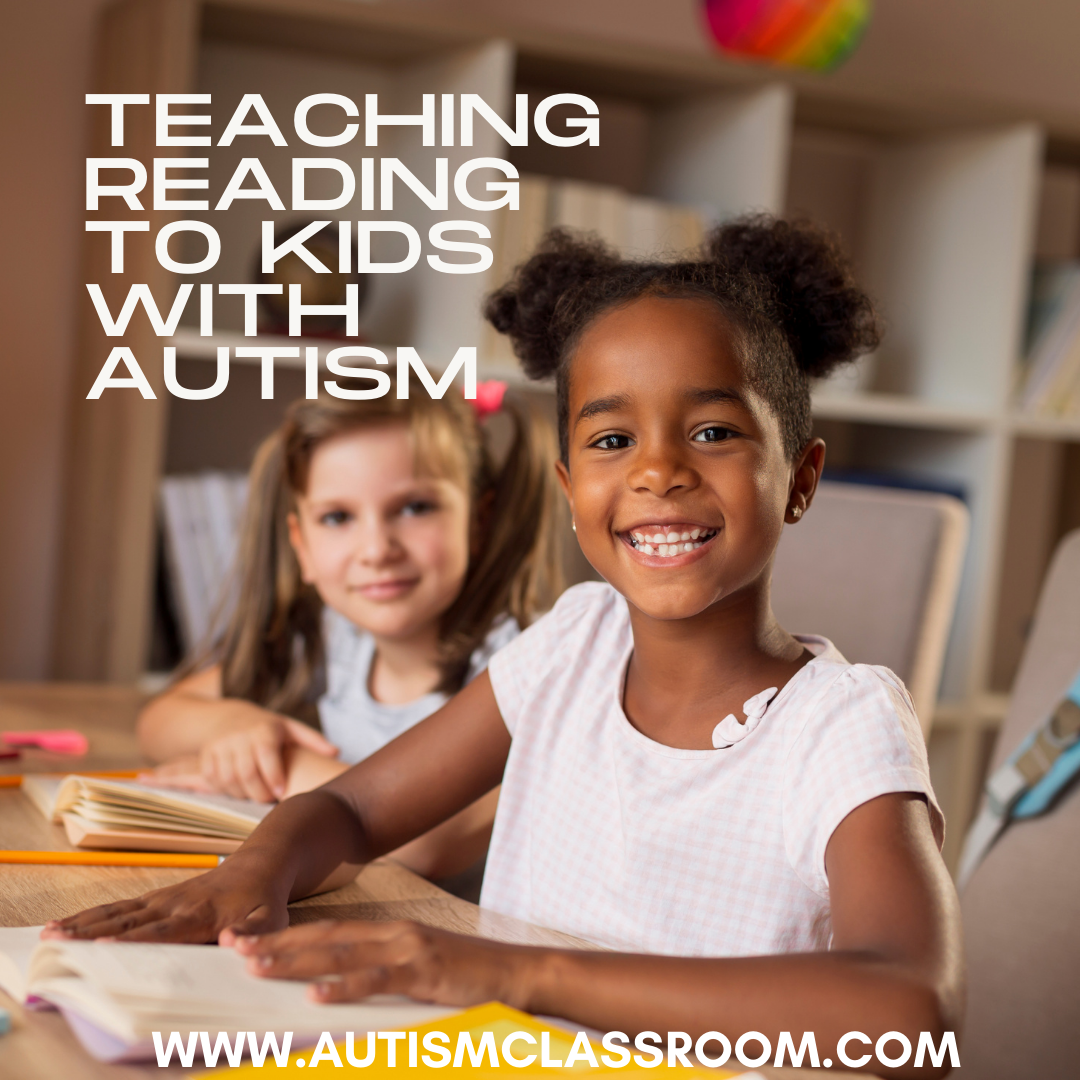
Inside: Autism and reading supports. Tips on teaching a child with autism to read, trying visual strategies and reinforcement.
Students with autism spectrum disorder (ASD) usually have more difficulty learning the traditional way because they may be wired to process information differently. That’s why teaching an autistic child to read can be a more challenging experience to guide them through. On one hand, you may have a child who teaches themselves to read, on the other hand you may have a student who needs extra guidance in this area. However, no matter where your child is located on the spectrum, there are plenty of strategies out there to help customize a perfect learning plan. Let’s explore some strategies to teach a child with autism to read and shape them into the best learners they can be.
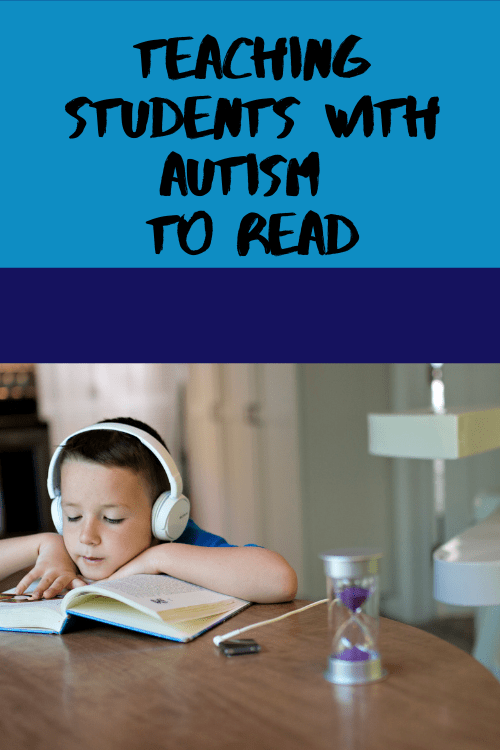
Directly Teach the Skills You Want the Student to Learn
Many students with autism benefit from direct, systematic instruction to learn new skills. Reading is no different. It might be overwhelming at first to jump right away into reading comprehension. That’s why you may want to start by directly teaching the consonant and vowel sounds to build up important alphabet knowledge and letter recognition. These may need to be focused on one at a time or a few at a time until each is mastered. Try breaking up your learning sessions into short and effective chunks, so your student can get the information without being overwhelmed by too many letters. Some people choose to start with the letters in the student’s name as the first letters to target.
Don’t Be Afraid to Teach Phonics
Especially when it comes to autism and reading, it’s key to incorporate learning phonics as part of the instructional process. Sometimes people may be tempted to skip this part when teaching a child with autism to read and go directly to teaching sight words. However, if students are younger and have limited verbal skills, you really don’t know what they are picking up. They could be talking in all of the information that you have, but just not showing you that they know it. It is important to provide the opportunity for them to learn the letter sounds and phonetic spelling of words. When you teach this, give instructions with as much clarity as you can. Autism Classroom has set of phonics worksheets to support instruction in that area.
Make it Visual
Reading itself, is a visual strategy, of course. But for student with autism, we need to up the visual ante. We can do this by using drawings, pictures, and photos to accompany the reading. Having flashcards with word and picture can help some students to understand the association. Just be sure to use various photos to represent a topic or word so that the student understands that this word has several ways it can be represented. For example, if teaching the word pen, be sure to have pictures of several different pens so that the student does not think that only a blue ink writing utensil is a pen. Another option if your student is a visual learner, try to get creative and use objects like rice, little candies, or chips to shape out some letters. If your student loves to use their hands the most, be sure to take advantage of magnetic whiteboards that have moveable letters or stick labels onto their favorite toys and gadgets. No matter what technique you use, it’s important that you help your child discover the method they learn the best with.
Use Reinforcement
While kids with autism are fantastic at interpreting everything quite literally, reading comprehension involves a little more work. During your learning sessions, make sure you help your student stay motivated by providing some type of reinforcement during or after the lesson. To provide motivation during the learning session, use characters and topics they enjoy hearing about and seeing to help teach them to read. Incorporate their favorite character to give them the directions for the lesson by having the picture or sticker of the character on the page. Or, show them an image or reminder of what they will be working towards or what they will get, once the activity is complete. An example of this would be our reinforcement pages worksheets where you can put a small picture reminder right on the worksheet.
As with many lessons for students with autism, try to break up a learning sessions into specific steps or into smaller work sessions as you teach. By making it more manageable by using short work sessions, they may be able to focus more of their energy on skill-building and word retention.
Be Concrete with Examples
Your student with autism may have a tough time trying to understand abstract or verbal examples. They’ll get so much more out of their lessons if you provide concrete examples when teaching spelling and reading concepts. A great way to be more hands-on and concrete is if you take advantage of letter tiles and flashcards. By guiding your student with direct instruction, they’ll be able to experience the titles and cards in a more bite-sized and retainable manner. To get a jump start on this, check out our free Emotions Flash Cards. Another way is to bring in real objects to highlight the words you are trying to focus on. For example, it will be easier for a student to understand what a mitten is if they see the word and see and touch the real object.
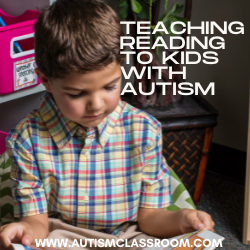
Reward the Growth
There’s no doubt about it that learning to read is a big challenge for kids. That’s why you should highlight your student and yourself for the progress that is made. Positive support plays a big role in reading development. Reward effort, keep motivating with favorite items or characters, use visual supports and build your student’s reading confidence.

